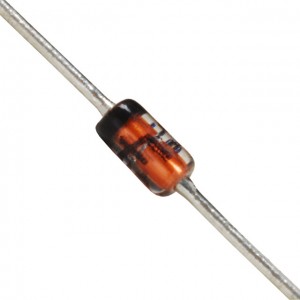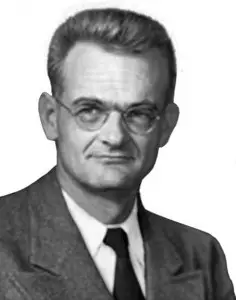
As we all know, a Zener Diode is used for regulating voltage in practical circuit applications. Though we know about the importance of this device, do we really mind knowing about how it was invented? If you had that query in your mind, then reading further would give you a thorough knowledge on the discovery of Zener Diode and its properties. You shall also be informed of the great scientists who worked on this device. Before going into the invention story, let us have a brief note on what a Zener Diode is.
Zener Diode
This semi-conductor device permits the flow of current in a unidirectional way. Provided with sufficient voltage, they allow the flow of current in the opposite direction as well. The excess voltage required for reversing the direction of flow of current is termed as breakdown voltage or Zener voltage. The major role of a Zener Diode is to function as a voltage regulator. It is fairly employed in many electrical and electronic tools and equipments. The Zener Diode varies in a wider range based on its mounting location. Most of them are either mounted onto a surface or found in holed components. The surface mount Zener Diodes are directly mounted on a printed circuit board. In the other technique, components are attached to the holes with the help of wires. The codes that represent Zener Diodes always begin with either of the letters BZX or BZY.
The early history of Zener Diode

Only when the need for semi conductor materials exceeded, the urge to develop a device like Zener Diode spread deeper and wider. Many early inventions were made till 1905, yet a more focused work on semiconductor devices were started only at the time of the Second World War. It was Clarence Melvin Zener who first elaborated on the advantageous properties of this diode.
Clarence Melvin Zener
Clarence Zener was a professor at Carnegie Mellon University in the department of Physics. His interests were focused on solid-state physics. In 1926, he graduated from Stanford University and received his doctorate from the Stanford University by 1929. He developed the Zener Diode in 1950 and employed it in modern computer circuits. Clarence Zener published a paper on explaining the electrical insulator’s breakdown in 1934.
He was recognized across the world for introducing a field of science with internal friction which was the subject on what most of his studies were focused.
Principle behind the invention of the Diode
The very basic principle that paved way for invention is the unidirectional way of flow of current. The very first Diode by Sir Thomas Alva Edison was a light bulb with certain modifications on it. Edison noticed that with an additional electrode, and connection to the positive side, facilitated the current flow from the filament towards the empty space.Though he observed, Edison was not at all sure about the physics behind this effect.Joseph J Thompson explained the reason behind this and was awarded the Nobel Prize in 1897. This lead to the invention of vacuum tube diodes. You can read the incredible story behind invention of Vacuum Tubes to know more about the people behind.
Pre- Zener Diodes
Many other scientists were interested in finding the alternative usage of this principle. John Ambrose Fleming tried using this valve for converting radio waves into signals that could be measured by employing a galvanometer. The Fleming valve is recognized to be the first true electronic device as of now.
In 1906, Greenleaf W. Pickard invented another new Diode. With his earlier studies, Pickard confessed that electrons can flow only in a single direction, employing certain minerals like silicon. Placing a silicon piece between a metal base and a metal wire, he developed a valve that can be utilized in detecting the radio waves.
This was named as cat’s whisker Diode as fine wires were employed in it. H. C. Dunwoody patented a developed form of this Diode that had the employment of carborundum in it.
Limitations of Cat’s whisker Diode
Though they were a revised version of electron tubes, they had certain limitation that shortened its usage. The first limitation was that they were more fragile and were prone to misalignment. Hence they required a very careful adjustment. Considering this reason, the use of cat’s whisper Diodes were fairly reduced, neglecting its advantage of working even in a very high frequency.
During the period of the Second World War, the BELL laboratories developed another new type of diode usingsemiconductors (silicon & germanium). Russel Ohl, who was a metallurgist in the Bell laboratories, developed a diode using Germanium crystal that produced electricity in response to light. It was facilitating the conversion of solar energy to electricity. It was found that the silicon piece that was cut has a large amount of impurity. The area where the impurity joined the silicon was termed as the junction. Years later, it was found that the impurities had developed response to the solar particles. This lead to invention of semiconductor based PN junction diodes. You can read the amazing story & series of events occurred at BELL labs during the invention of PN juction diode to gain more knowledge. Even before the identification of the reason, the production of these solar converters hadbeen initiated.
The usage of Diodes thus slowly expanded from time to time. Electron tube diodes are used very rarely. But then, the diodes that are made out of the material silicon have a wider application. This helps in detecting the high frequency electromagnetic waves. They also serve as components for the conversion of energy obtained from Sun to electrical signals. Inside many electronic devices like televisions and the computers, the diode systems are employed for averting the alternative current (AC) to direct current (DC) and also in the regulation of the voltage level.
Automobiles are imparted with high potential Diodes. Their role is also similar to that of the other Diodes like converting the AC to the DC. In the early 1906, incandescent lamps were replaced with the LED or the light emitting Diodes. The lights used in the headlights of car and other light bulbs are also very likely to be replaced with the light emitting Diodes.

7 Comments
I appreciate U. Please continue by this way. I would like to ask a question to help me. Please send a note about zener diode ?
Mekuanint Alemu DEP physics
From ETHIOPIA, ADDISS ABABA